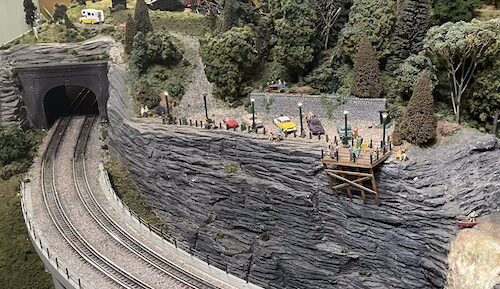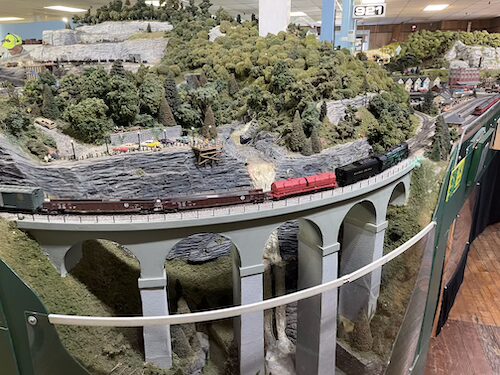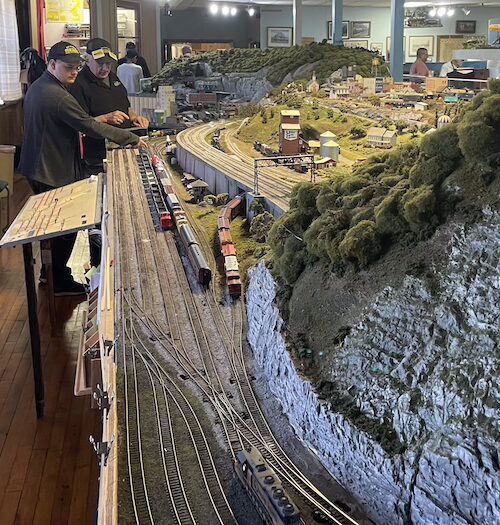Mark’s Score 7.8

Trains and Christmas go back many decades, when model trains were popularized in department store window displays in the 1950s.
In keeping with that tradition, the Delmarva Model Railroad Club holds an open house on four weekends a year, the two weekends immediately after Thanksgiving and the two weekends immediately after New Year’s Day. I was unaware of this club until a couple of weeks ago when I read an article in the local paper about their open house. The open house has been a club tradition for 39 years.
The club was founded by a group of model train enthusiasts in the summer of 1984. In the summer of 1985, they permanently moved into the second floor of St. Stephens Methodist Church’s Camelot Hall on East State Street in Delmar. Over time the club and train collection grew to the point that the train displays now cover the entire second floor of the hall.

I visited the display during the first open house weekend. I have to admit that I know almost nothing about model trains. But it is my understanding that there are a variety of scales and within the scales their ae a variety of gauges. In addition, there is a room dedicated to the “tin plate” layout. The tin plate layout was a Lionel Train Company layout made popular by those window displays in the 50s. The club’s biggest display, is the HO scale train display which covers 2700 Sq ft (250 Sq m).
I did learn a few things about the trains during my visit, thanks to the very friendly and enthusiastic club members. You do not have to be a fan of model trains to be impressed by the amount of detail (and work) that went into building these displays. The HO display alone contains thousands of trees. The terrain construction, with cliff faces, hills, streams, and tunnels represents an unimaginable amount of work. There are little people picnicking, canoeing, holding hands, and buying hotdogs. But the real revelation is the amount of electrical work required to make these train sets run.

One of the members was kind enough to open one of the panels for me. It was astounding to see the number of relays, cables, and wires connecting each individual train set to the control panels. The control panels themselves looked like something out of a powerplant. But the really interesting thing that I learned was that the dioramas are transportable. If you look very closely you can see that the dioramas are divided into sections. These sections can be disassembled and reassembled elsewhere. Steve, one of the members, explained that this is done because they sometimes display the trains in remote locations such as malls or department stores.
I am not a model train afficionado, but I did come away from this event with a respect for the creativity, dedication, and hard work of the people who participate in this art form.

Leave a Reply